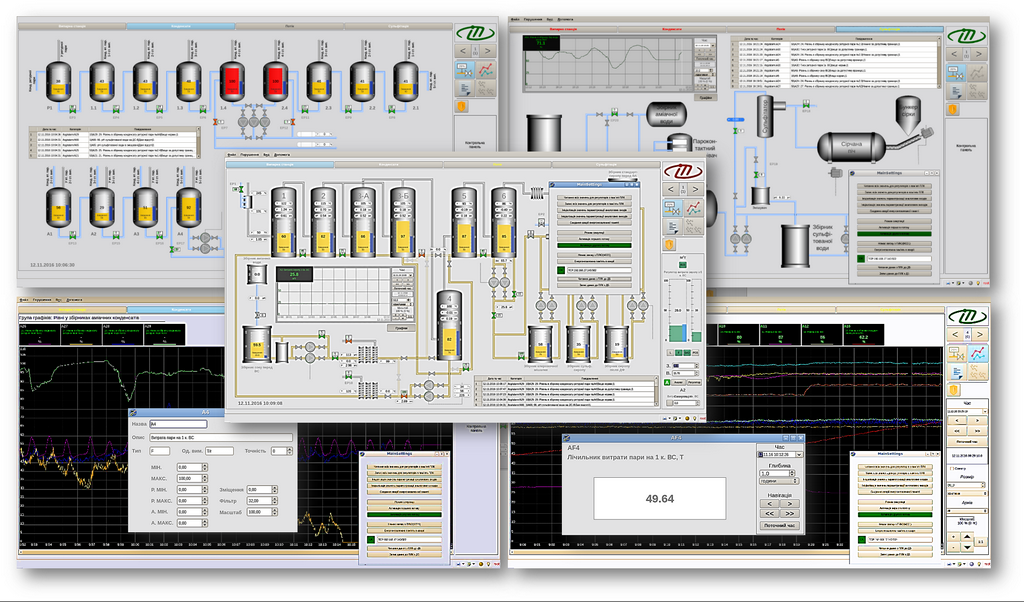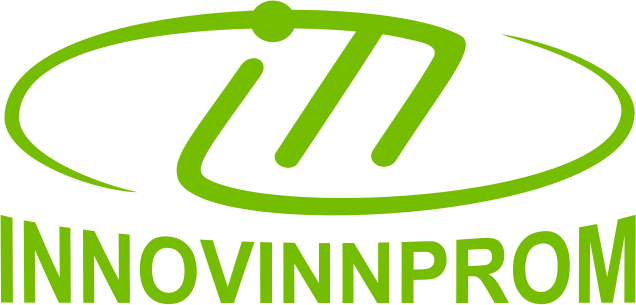Automation of sugar production
The system of remote automated control of the sugar factory (RADS-S) is intended for the automation of the processes of cleaning, evaporation, sulfation, condensation and others at sugar factories. The system provides automatic control of equipment operation, accounting for necessary technological delays, compliance with technological algorithms.
The use of RADS-S allows to significantly increase the productivity of the sugar factory and reduce economic losses due to the elimination of personnel errors when working with the equipment and the reduction to a minimum of technological delays when turning on / off the equipment, reducing the reaction time of the system in the event of an emergency situation.
RADS-S provides accounting of the working hours of each unit of equipment.
To support the operation of the implemented RADS-S, the INNOVINNPROM service support system has been implemented, which provides the possibility of prompt remote resolution of technological scheme modernization issues, software updates of all levels, overcoming emergency situations without the developer's representatives visiting the facility.
Structure of RADS-S
When building systems for remote automated control of a sugar factory, the following basic principles, developed on the basis of many years of successful implementation experience, are taken into account:
- high system reliability;
- system modularity;
- repeatability during implementation;
- the shortest terms of implementation;
- ease of setup and maintenance.
Programmable logic controllers (PLCs) perform the functions of equipment management, control of its condition and processing of emergency situations.
PLC software uses typical algorithmic modules (functional blocks) for the main types of executive devices and typical control tasks. Therefore, when implementing an automation object, the programmer's task is reduced to the adaptation of the PLC software to the object's specific equipment by adjusting the existing functional blocks.
During the construction of RADS-S, the possibility of using up to 32 PLCs at the same time is envisaged. This architecture has a number of advantages compared to a classic single-processor system:
- higher reliability of the system due to the distribution of the structure (territorially by WP, functionally by loading / unloading, type of storage, etc.);
- there is practically no limit on the number of input / output channels;
- the cost of the system is lower due to the reduction of the cost of the PLC and the reduction of labor costs for its programming (as a rule, a non-functionally saturated, easy-to-program PLC with minimally sufficient technical parameters is used).
The safety equipment includes frequency drives, soft starters of electric motors, circuit breakers, automatic switches, magnetic starters, control and protection relays, fuses, control buttons and push-button stations, cam and packet switches, signal lamps, etc. to be installed both individually and in complete stations, panels and control panels for both separate machines and aggregates, as well as entire technological lines.
Typical connection and control schemes made in accordance with the requirements of the standards are used to connect the equipment.
RADS-S software
The software is designed to manage the technological processes of cleaning, evaporation, sulfation, condensation of a sugar production and visualization on the screen of the operator's station in real time of complete and reliable information about the progress of the technological process.
The simple and convenient interface of the program ensures effective and comfortable work with data, which, in turn, minimizes errors and inaccuracies.
The software is made in accordance with the standards and recommendations for the development of modern software and works in the GNU / Linux OS environment.



 Glyanec
Glyanec